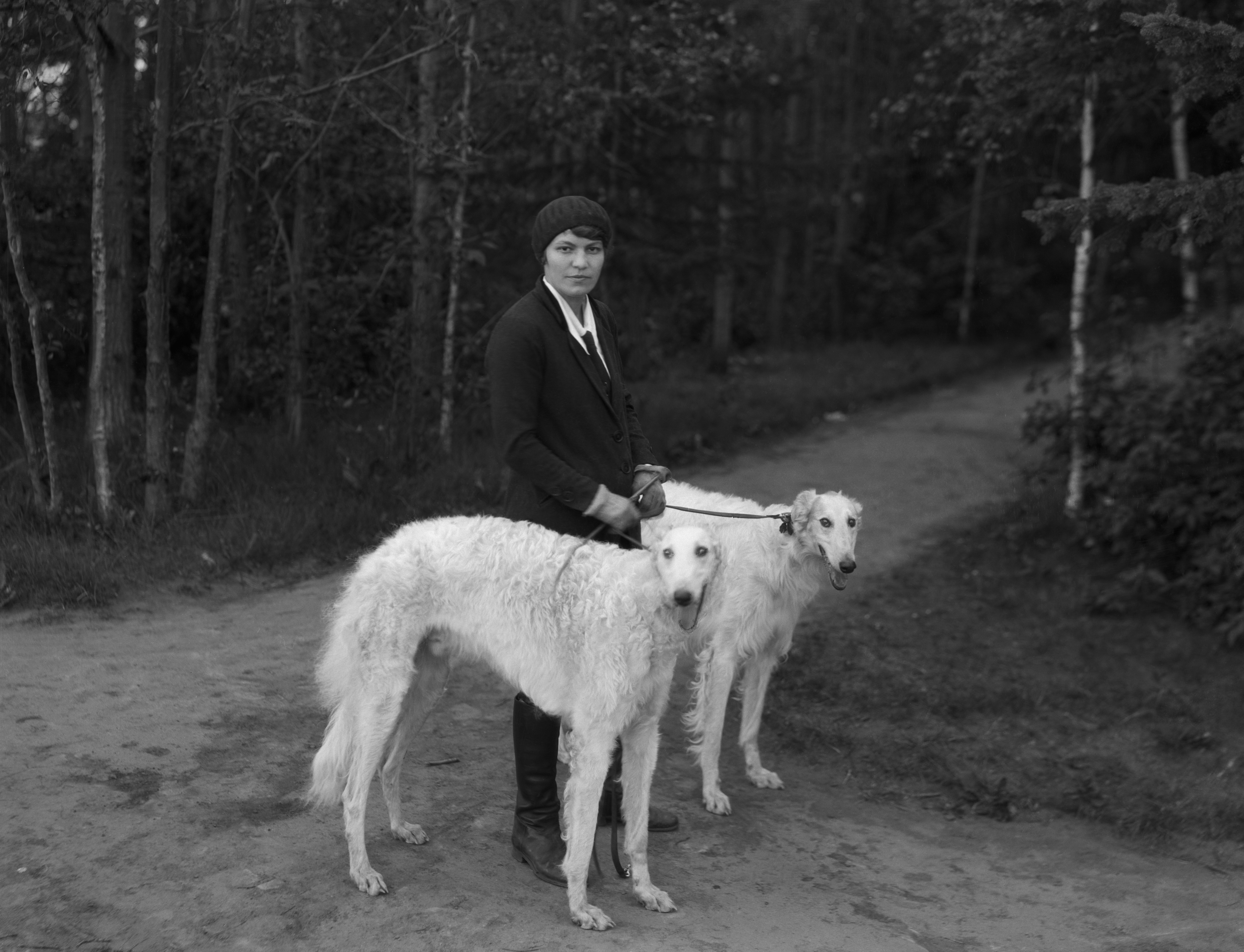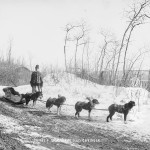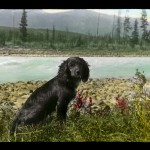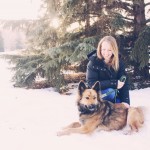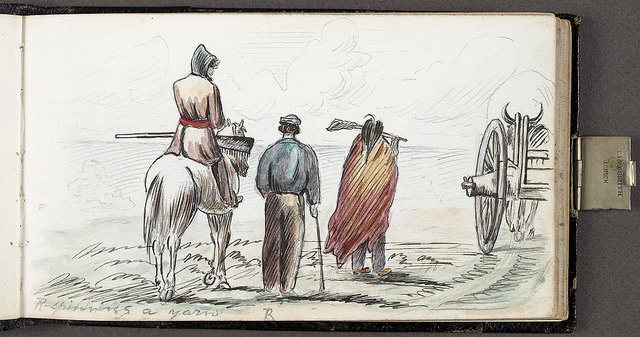Edmonton loves their dogs. If you are one of the many that own or ‘parent’ these animals, I would hazard that you have spent countless hours tending their needs, researching their behaviors, testing their intelligence as they are regarded as members of your family. How did these creatures originating from wolves arrive in the West? In what way did their behaviors shape their history and contribute to their presence in society? Edmonton and Western Canada holds a long history of canines in the region, and they continue to have a presence today. Grab a leash, a Kong toy and dive into how man/woman’s best friend has shaped the city you live in.
Dogs have widely been accepted as originated from the breed canis lupus, more commonly known as wolves. Albeit larger, dogs have evolved in order to match the society they associate with[1]. Dr. Robert Losey, archaeologist at the University of Alberta lectured at TELUS World of Science in November, introducing the findings of his specialty on dog domestication and human-animal interaction. Along with his team of researchers and graduate students, he studies the remains of dogs and their ancestors in Eastern Russia and Siberia. Sharing the findings of their work through http://dogarchaeology.org/, Dr. Losey and his team are bringing the field of archaeology to Albertans via a channel they can identify with; the pets they have in their household. According to Losey, dog domestication records begin to show approximately 15,000 years ago, and interestingly it appears not that the human domesticated the dog, but rather the dog domesticated themselves. As creatures of opportunity, they adapted to become more accustomed to humans, and humans received them for a variety of purposes. The duties of dogs throughout history ranged from agriculture, hunting, companionship and most notably for our purposes, sled-pulling and hauling. As social animals, they were willing and almost eager to join forces with humans to mutually benefit each other[2].
- Provincial Archives of Alberta B5707
In pre-Columbian times, the dog was the most domesticated animal in North America, although evidence shows that Aboriginal groups did keep some birds and other mammals as companions[3]. Throughout the centuries, women’s work of pulling travois and hauling was slowly transformed into a task for dogs in various nations. As civilization marched westward from Europe to Eastern Canada then across the prairies, dogs were present in the narratives of western peoples[4]. Mary Schaffer Warren, explorer-writer-photographer extraordinaire of the late 19th century, conveyed the value of her canine companion Mr. Muggins throughout her treks in the Rocky Mountains. “His breed? Part Spaniel. I suppose breed was not his strong point. He swam like a duck, he kept us in grouse, he never got into trouble with porcupines, he was friendly with all, yet loved by one – his master. He was just adorable little Muggins – first, last, and always”[5]. Although dogs were seen as a utility, they were also regarded with value and importance as part of the team attempting to reach a goal. Their skills as haulers and pullers made their presence in the developing West ever respected, as commerce from natural resources such as fur began to open the frontier.
- Mr. Muggins. Whyte Museum of the Canadian Rockies, V439-ps-46.
- Mr Muggins, 1908. Whyte Museum of the Canadian Rockies, V439-ps-38.
Prior to 1800, mail services to remote territories of British North America was restricted to official communications of fur trading business of the Hudson’s Bay Company and the Northwest Company, with only personal correspondence delivered as a private courtesy[6]. Around 1801, the Northwest Company initiated mail service by dog team from Fort Chipewyan on Lake Athabasca to headquarters at Fort William (with no surprise, the HBC soon followed practice)[7]. Until 1845, the company carried letters free of charge for employees and factors, as well as freemen and settlers. Post 1845, the charge of $1.00 was applied to outsiders for this privilege. “The Packet” as it was called, consisted of a four-dog toboggan of ‘northern husky breed’. The winter packet ran from Fort Garry, the whole length of Lake Winnipeg to Norway House in eight days—a distance of approximately 350 miles—and back again. The practice of dog teams continued throughout the 19th and early 20th century, as the Klondike demanded even more traffic (teams would change every 30 miles to preserve the animals)[8].
For an even further local connection, it was custom for the Hudson’s Bay Company to meet at Fort Edmonton during the Christmas week to discuss business, prepare orders for trade goods and further, to make merry for the season tidings[9]. Peter Erasmus’ work Buffalo Days and Nights recounts the dogs that were present at these events. “Every dog driver and team was rushing supplies of fish—with a roar from the dogs when visitors approached … After the event, their dogs were still dressed in all ribbons, tassles and bells of the previous day, but at noon, the dogs would be stripped of the decorations which were carefully put away for the next year”[10]. Erasmus entered into the most competitive and renowned dog race in the West which was held at Fort Edmonton, not ceding to the warning of his friend who told him the race was only for the best dog drivers on the prairies. However, Erasmus knew of the merriment that the drivers had engaged in the night before, and suited up his team to race across the frozen North Saskatchewan. To the shock and illness of his competitors, Peter Erasmus won the race and further solidified his stance in the legends of Fort Edmonton.
Many dogs in Edmonton have a very different lifestyle today. From aqua therapy to doggy-style deli, daycares, training centers and 30 off-leash parks, Edmontonians have continued to have dogs in their homes and hearts. Not to forget the importance of service and working animals; to the K9 unit of the Edmonton Police Force to specialized therapy animals, dogs will always be a part of this city’s story. There are also over 10 animal rescue agencies in the city, tirelessly working to find ‘furever’ homes for dogs without people. I encourage all to research rescues, get out walking and fetching and celebrate our best friends and their contribution to our story.
- The author and her very spoiled German Shepherd-Collie rescue, Echo. Photo credit: David Christian Haylett
[1] Darcy F. Morey, Dogs: Domestication and the Development of Social Bond (New York: Cambridge University Press, 2010), 1
[2] Mark Derr, How the Dog Became the Dog: From the Wolves to Our Best Friends (New York: Overlook Duckworth, 2011), 40
[3] Wendy Bush. Ascent of the Dog: Working Dogs in the West (Calgary: Detselig Enterprises Ltd, 1998), 53
[4] Bush, 14
[5] Bush, 22
[6] Bush, 69
[7] Bush, 69
[8] Bush, 72
[9] Bush, 86
[10] Peter Erasmus, Buffalo Days and Nights (Calgary: Glenbow Institute, 1999) 38-43
